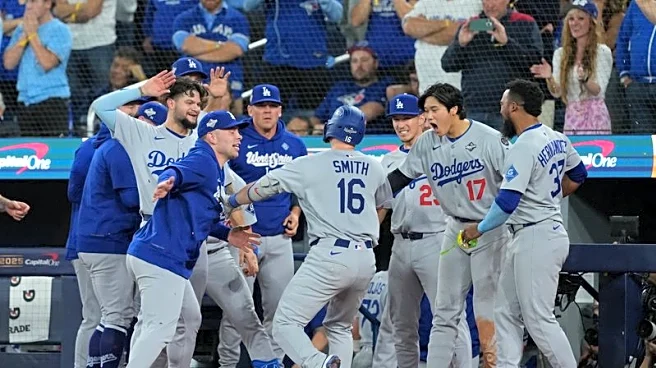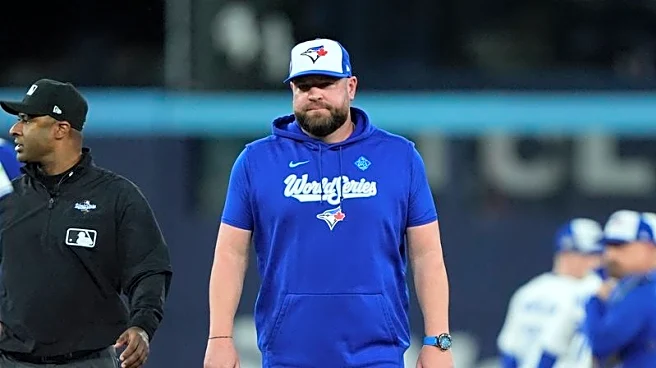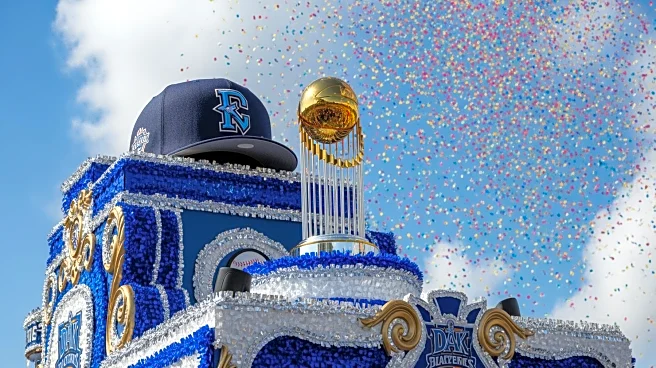What's Happening?
The Los Angeles Dodgers have captured international attention with their recent World Series victory over the Toronto Blue Jays, marking their second consecutive championship. The Dodgers' success, achieved with a $509.5 million payroll, has highlighted
the growing disparity in team spending within Major League Baseball (MLB). This financial gap is expected to be a central issue in upcoming labor negotiations, as the current labor contract is set to expire in December 2026. The Dodgers' spending, which includes a significant luxury tax and signing bonuses, has sparked discussions about the potential implementation of a salary cap, a contentious topic that previously led to a major strike in 1994-95.
Why It's Important?
The Dodgers' financial strategy underscores a broader issue within MLB regarding competitive balance and financial equity among teams. The disparity in team payrolls could lead to significant changes in league policies, potentially affecting team operations and player salaries. The possibility of a salary cap is particularly contentious, as it could limit the spending power of wealthier teams while providing smaller market teams with a more level playing field. This situation could lead to a shift in how teams build their rosters and compete, impacting the overall dynamics of the league.
What's Next?
As MLB prepares for labor negotiations, the issue of payroll disparity and the potential for a salary cap will likely dominate discussions. The players' association is expected to resist any push for a salary cap, which could lead to prolonged negotiations or even a labor dispute. Additionally, the success of international players like Shohei Ohtani and the potential influx of Japanese talent could further influence MLB's global reach and market strategies. The introduction of automated systems for ball and strike calls next season also signals a shift towards technology-driven officiating in the sport.
















